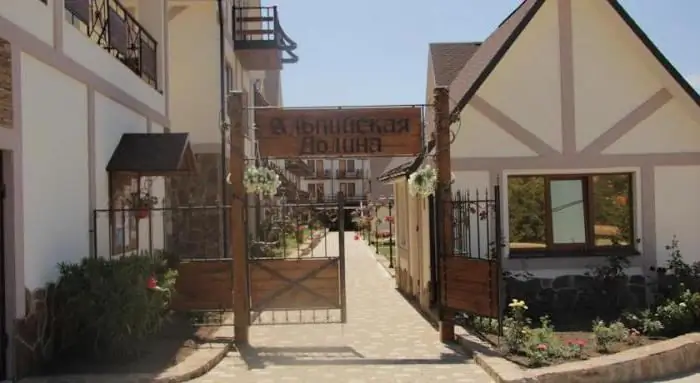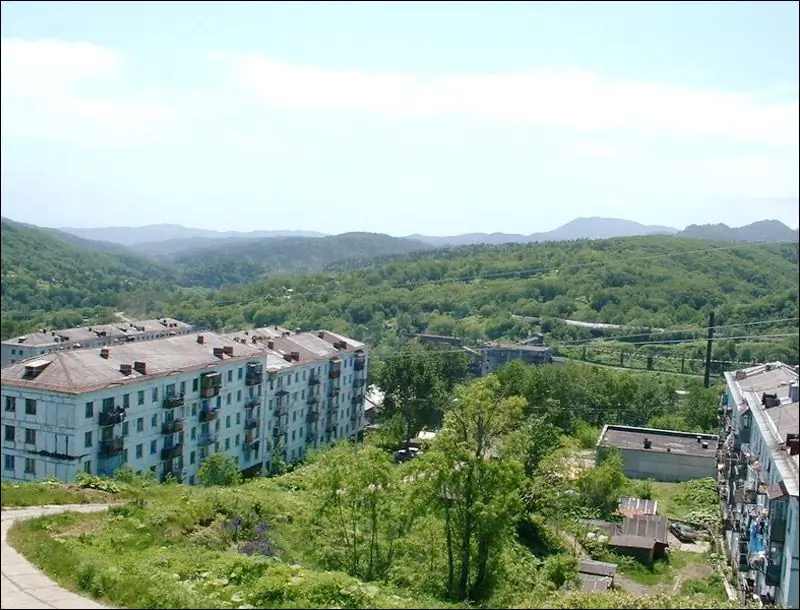- Author Harold Hamphrey [email protected].
- Public 2023-12-17 10:06.
- Last modified 2025-01-24 11:10.
Tunkinskaya Valley is one of the most beautiful places in Buryatia. Silk, bronze, tea and gold routes passed here. Also along the valley stretches the road leading from Russia to Mongolia.
Location of the Tunkinskaya Valley
Tunkinskaya valley is geographically a continuation of the Baikal depression. It is an almost round basin. The name of the valley comes from the Buryat word "tunehe", which translates as "wander". The Tunka Valley owes its name to the winding Tunka River that flows through it.

From all sides the valley is surrounded by mountains: from the north - the Tunkinsky Alps, from the west - the Yelot spur, from the east - the Elovsky spur, from the south - the Khamar-Daban ridge. At its widest point, the Tunkinskaya Valley has a distance between the ridges of about 35 kilometers. The surrounding mountains are largely covered with coniferous forests.
The Tunkinsky Alps are difficult to access and steep, the rocks are sharp. The height of some mountains exceeds 3 km. Due to the significant height, the peaks often remain snow-covered even in the second half of summer. The peaks of the Khamar-Daban ridge have a more gently sloping rounded shape.
SFrom a geological point of view, the Tunkinskaya Valley is the bottom of an ancient lake. As a result of a tectonic catastrophe, a powerful bridge was destroyed, and the water of the ancient reservoir went into Baikal.
Koymora
The northwestern part of the valley is called Koymora. This is an area with a large number of lakes, some areas are swampy. Favorable natural conditions, including an abundance of moisture, have made this area ideal for animal husbandry.

Locals have long been raising livestock on the floodplains of Koymora. Previously, the collective farm was engaged in this, now it is small livestock farms.
The Tunka River, flowing through the northwestern part of the valley, originates in the Tunkinsky Alps and flows into the Irkut River (left tributary).
Irkut
The Irkut River crosses the southern tip of the valley. The river got its name from the Buryat word "irhu", which means "capricious". Indeed, the flow of the river is extremely variable. In places constrained by rocks, the Irkut seethes with a mighty stream, and when it goes out into the open, it is replaced by meanders.

This river starts on the highest glacier in the eastern Sayan and flows into the Angara, being its left tributary.
The Buryats have a legend that says that Irkut wanted to marry Angara, but the bride fled to the Yenisei. Since then, Irkut has been forced to endlessly catch up with the waters of his beloved in her eternal quest.
Bumps
The northeastern part of the valley is replete with traces of the formervolcanic activity. Numerous mounds, many of which are covered with coniferous forest, are cooled down volcanoes. These hills are collectively called Bugry, and some of them, the most prominent, have their own names. Such, for example, are Khara-Boldok, Tal peak, Shandagatai.
In the immediate vicinity of the Tal peak, there are many porous bas alt blocks of volcanic origin. At the foot of this hill, as well as at almost all the hillocks, non-freezing springs gush out of the ground. In this regard, Kuntensky Arshan is interesting - a deposit of natural waters near one of the extinct volcanoes. There are natural mineral springs with a high content of hydrogen sulfide, which are considered curative.
National Park
Tunkinsky National Park covers an area of 1.2 million hectares. It includes the entire Tunkinskaya valley. Observatory "Siberian Cross" studies the activity of the sun and owns one of the largest solar telescopes. This place was chosen for observing the luminary, because here is the cleanest and most transparent air. Also on the territory of the park there are three museums - Local Lore (village Kyren), Ethnographic (village Khoytogol) and the history of Buddhism (village Zhemchug).

Tunkinskaya valley is very beautiful and visited by tourists. The recreation centers presented here are of great interest. There are resorts with hot and cold mineral water, such as Arshan, Nilova Pustyn, Vyshka (Zhemchug village), and Khonsor-Uula. Here you can also admirelandscapes that abound in the Tunkinskaya Valley. Nilova Pustyn is a resort with a radon spring with healing properties. Joints and skin diseases are treated here.
In the valley there is an ancient cult place - Bukha-Noyon (can be translated as "leader, master, bull"). It is a huge white marble rock at an altitude of 1050 m, which resembles a bull in shape. In addition to the fact that Bukha-Noyon is a totem of local peoples, there is also a Buddhist shrine on top of this rock (in Buddhism it is revered as Rinchen Khan, the patron of we alth). According to traditional beliefs, it is forbidden to visit this shrine for young girls (who, according to legend, are threatened in this case with infertility). Before visiting, a Buddhist monk conducts a preparatory cleansing ritual.
Tunkinskaya Valley is one of those places where there are a lot of beautiful views and interesting sights.






